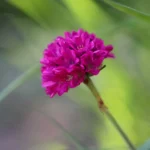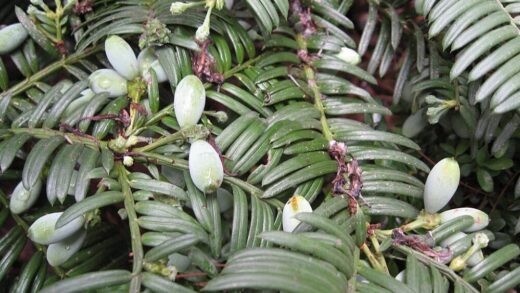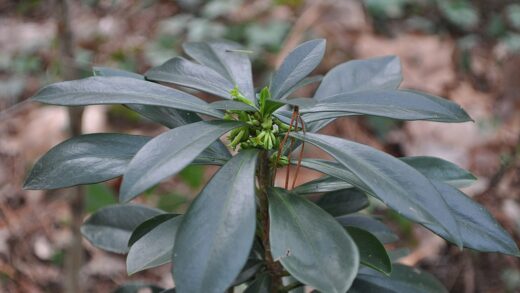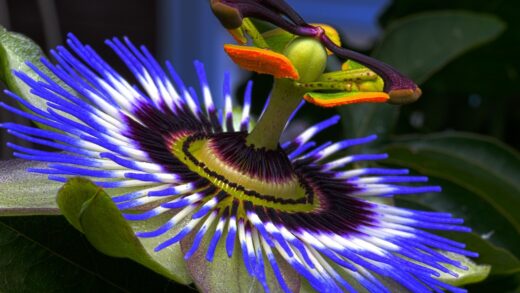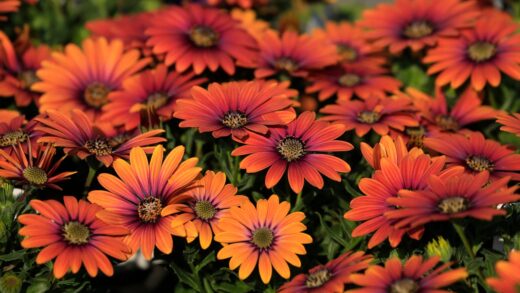Understanding the water requirements of dahlias is fundamental to cultivating healthy, vibrant plants that produce a profusion of stunning blooms. These plants are native to the mountainous regions of Mexico, where they experience warm, sunny days and receive regular rainfall during their growing season. In a garden setting, it is our job to replicate these conditions by providing consistent and adequate moisture. However, the relationship between dahlias and water is a delicate balance; both too little and too much can lead to significant problems, from wilting and poor flowering to the dreaded tuber rot. Therefore, a thoughtful and observant approach to irrigation is paramount for success.
During the initial stage after planting, the dahlia tuber requires very little to no supplemental water. The tuber itself contains all the necessary moisture and nutrients to initiate the growth of the first shoots. Watering at this stage is not only unnecessary but can be detrimental, as the cold, inactive tuber is highly susceptible to rotting in damp soil. It is best to wait until the first green shoots have emerged from the ground before you begin a regular watering schedule. This indicates that the plant has started to form a root system that can actively take up water from the soil.
Once the dahlia plant is actively growing, its water needs increase significantly, especially during periods of warm, dry weather. The large leaf surface area of a mature dahlia plant can lead to substantial water loss through transpiration. The key to effective watering is to provide deep, infrequent soakings rather than light, daily sprinklings. A deep watering encourages the roots to grow further down into the soil in search of moisture, creating a more resilient and drought-tolerant plant. A light sprinkling only moistens the top layer of soil, encouraging shallow root growth and leaving the plant more vulnerable during dry spells.
The best way to determine when your dahlias need water is to check the soil moisture. Simply insert your finger a few inches into the soil near the base of the plant. If the soil feels dry at that depth, it is time to water. As a general guideline, dahlias will benefit from a deep soaking once or twice a week during the peak of the summer, but this will vary depending on your soil type, climate, and recent rainfall. Sandy soils will require more frequent watering than heavy clay soils, which retain moisture for longer.
Watering techniques
The method you use to water your dahlias can have a significant impact on their health and can help to prevent common diseases. The most recommended technique is to apply water directly to the base of the plant, soaking the soil around the root zone. This ensures that the water reaches the roots where it is needed most and minimizes moisture on the leaves and flowers. Wet foliage, particularly overnight, creates the perfect environment for fungal diseases such as powdery mildew and botrytis to develop and spread.
More articles on this topic
Using a soaker hose or a drip irrigation system is an excellent way to achieve this targeted watering. These systems deliver water slowly and directly to the soil surface, allowing it to be absorbed deeply into the root zone with minimal evaporation or runoff. They are highly efficient, conserving water while also helping to keep the foliage dry. If you are watering by hand, use a watering can with a long spout or a hose with a watering wand to direct the water to the base of the plant, taking care to avoid splashing soil onto the lower leaves.
The time of day you water is also an important consideration. Watering in the early morning is ideal for several reasons. It allows the plant to take up the moisture and be well-hydrated before the heat of the day sets in, which can cause stress. It also gives any moisture that does splash onto the leaves ample time to dry in the sun, reducing the risk of fungal infections. Watering in the middle of a hot, sunny day is inefficient as a significant amount of water can be lost to evaporation. Evening watering is a viable alternative, but it can increase the risk of disease if the foliage remains wet throughout the cool night.
For dahlias grown in containers, the watering requirements are slightly different from those grown in the ground. Potting soil tends to dry out much more quickly than garden soil, especially on warm or windy days. Container-grown dahlias will likely need to be watered daily, and sometimes even twice a day, during the peak of summer. Always check the soil moisture before watering, and ensure the pot has adequate drainage holes to allow excess water to escape freely. Water thoroughly until you see it running out of the bottom of the pot, which ensures the entire root ball has been saturated.
The impact of soil type
The type of soil in your garden plays a crucial role in determining your watering strategy for dahlias. Different soil types have varying capacities to hold and drain water, which directly affects how often your plants will need to be irrigated. Understanding your soil’s composition—whether it is predominantly clay, sand, or loam—is the first step towards developing an effective watering routine. A simple soil texture test can provide valuable insights into its structure and properties.
More articles on this topic
Heavy clay soils are composed of very fine particles that pack together tightly, resulting in slow drainage. While clay soils are excellent at retaining moisture, which can be beneficial during dry periods, they also have a higher risk of becoming waterlogged. For dahlias planted in clay soil, it is crucial to water less frequently but deeply, allowing the soil to dry out somewhat between waterings to prevent the tubers from rotting. Amending heavy clay with organic matter like compost can significantly improve its structure and drainage over time.
Sandy soils, in contrast, have large particles and a loose structure, which allows water to drain through very quickly. This excellent drainage reduces the risk of root rot, but it also means that sandy soils do not retain moisture or nutrients well. Dahlias grown in sandy soil will require more frequent watering than those in clay soil, as the water will not remain in the root zone for as long. Regularly incorporating organic matter is especially important in sandy soils to help improve their water-holding capacity and fertility.
The ideal soil for dahlias, and indeed for most garden plants, is a loam. Loam soil is a balanced mixture of sand, silt, and clay particles, giving it the perfect structure for both moisture retention and good drainage. It holds enough water to keep the plants hydrated while allowing any excess to drain away freely, preventing waterlogging. Even if your garden does not have naturally loamy soil, you can work towards creating it by consistently amending your existing soil with generous amounts of organic matter each year.
Signs of overwatering and underwatering
Being able to recognize the signs of both overwatering and underwatering is a vital skill for any dahlia grower. While these two problems stem from opposite causes, they can sometimes present with surprisingly similar symptoms, such as yellowing leaves and wilting. Observing your plants closely and correlating their appearance with your recent watering practices and weather conditions will help you to diagnose the issue correctly and take the appropriate action.
Underwatering is often the easier of the two to identify. The most obvious sign is wilting, where the leaves and stems droop, particularly during the hottest part of the day. The leaves may also appear dry, crispy, or scorched at the edges, and the overall growth of the plant will be stunted. Flower production will decrease, and the buds that do form may fail to open properly or may be smaller than usual. If you see these signs, check the soil, and if it is dry, a deep, thorough watering will usually see the plant recover within a few hours.
Overwatering, while more insidious, is far more dangerous for dahlias as it can lead to irreversible tuber rot. One of the primary signs of overwatering is yellowing leaves, particularly the lower leaves on the plant. The plant may also appear wilted, not because of a lack of water, but because the waterlogged soil has deprived the roots of oxygen, causing them to rot and become unable to absorb water. The stems may feel soft or mushy at the base, and the overall plant may look sickly and lack vigor.
If you suspect you have been overwatering, the first step is to immediately stop watering and allow the soil to dry out completely. Check the drainage of the area or container and take steps to improve it if necessary. For potted dahlias, this might mean repotting into a better-draining mix. For garden plants, you may need to amend the surrounding soil with organic matter or grit. Unfortunately, if tuber rot has already set in, the plant may not be salvageable. This is why prevention, through careful watering practices, is so critically important.
Mulching to conserve moisture
Applying a layer of organic mulch around the base of your dahlia plants is a highly effective strategy for conserving soil moisture and creating a more stable growing environment. Mulch acts as a protective barrier on the soil surface, reducing the rate of evaporation caused by the sun and wind. This means that the soil retains its moisture for longer, reducing the frequency with which you need to water your plants. This is not only beneficial for the plants but also helps to conserve a valuable resource.
There are many different types of organic materials that can be used as mulch, including straw, shredded bark, compost, leaf mold, or grass clippings (used in thin layers to prevent matting). Apply a two- to three-inch layer of your chosen mulch over the soil surface around the dahlias, taking care to leave a small gap directly around the base of the stems. Piling mulch right up against the stems can trap too much moisture and may lead to stem rot. The best time to apply mulch is in late spring or early summer, after the soil has warmed up and the dahlia plants are well-established.
In addition to moisture conservation, mulching offers several other significant benefits for your dahlias and the overall health of your garden soil. A layer of mulch helps to suppress weed growth by blocking sunlight from reaching weed seeds, reducing the competition for water and nutrients. As the organic mulch gradually breaks down over the course of the season, it enriches the soil, improving its structure and fertility. It also helps to moderate soil temperature, keeping the roots cooler during hot summer days and warmer during cool nights.
By creating a more consistent level of soil moisture, mulching helps to reduce stress on the dahlia plants. Plants that are subjected to cycles of extreme dryness followed by heavy watering can become stressed, which can make them more susceptible to pests and diseases. A mulched bed provides a more buffered environment, promoting steady, healthy growth and, consequently, more abundant and beautiful blooms. It is a simple, yet powerful, technique that should be a part of every dahlia grower’s care routine.









